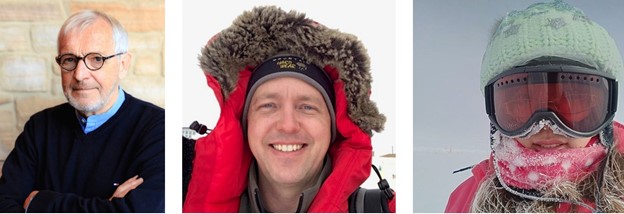On September 15, 2021, at 7 pm, there will be a special edition of Wednesday Nite @ The Lab, the weekly science outreach series hosted by the University of Wisconsin–Madison. This Wednesday’s program features scientists from the Wisconsin IceCube Particle Astrophysics Center (WIPAC), a UW–Madison research center, who will give a presentation titled “IceCube Turns Ten: Past, Present and Future for the World’s Biggest and Strangest Observatory.”
WIPAC is headquarters for the IceCube Neutrino Observatory, sometimes known as “the strangest telescope in the world.” IceCube is made up of over 5,000 light sensors buried in a cubic kilometer of ice at the South Pole and detects signals from particles called neutrinos that interact in the ice—some of which reveal previously hidden information about the universe. It has been 10 years since IceCube began full operations on May 13, 2011.
Some of IceCube’s most significant results from the past decade include the first evidence for neutrinos from outside our galaxy, pinpointing potential neutrino sources, and the recent detection of a Glashow resonance event.
Three speakers from WIPAC—Prof. Francis Halzen, Dr. John Kelley, and Prof. Lu Lu—will talk about the massive construction effort led by UW–Madison, highlight exciting discoveries uncovered by a team of nearly 400 scientists from 53 institutions in 12 countries, and give a glimpse into the future of this one-of-a-kind instrument.

Halzen is the principal investigator of IceCube and Gregory Breit and Vilas Research Professor at UW–Madison. In 1987, Halzen started working on the concept of using natural Antarctic ice as a neutrino detector. This led to the AMANDA experiment, a first-generation neutrino telescope at the South Pole that represented a proof of concept for the IceCube Neutrino Observatory.
Kelley is a scientist and detector operations manager of the IceCube Neutrino Observatory. He started working on IceCube in 2003 and has deployed nine times to the South Pole.
Lu is an assistant professor at UW–Madison who works on IceCube. In addition to her research and development work, Lu co-developed an augmented reality app, ICEcuBEAR, to visualize IceCube real-time alerts on mobile phones.
The hybrid event, which is free and open to the public, will be broadcast live on the Biotech Center website and later viewable on YouTube. All are welcome to attend in person at the Biotechnology Center at 425 Henry Mall, Room 1111 (The Auditorium), Madison, WI, 53706. All attendees and speakers must follow campus COVID safety guidelines. Learn more about the event here.
Contact:
WIPAC Communications
608-515-3831
learn@wipac.wisc.edu
